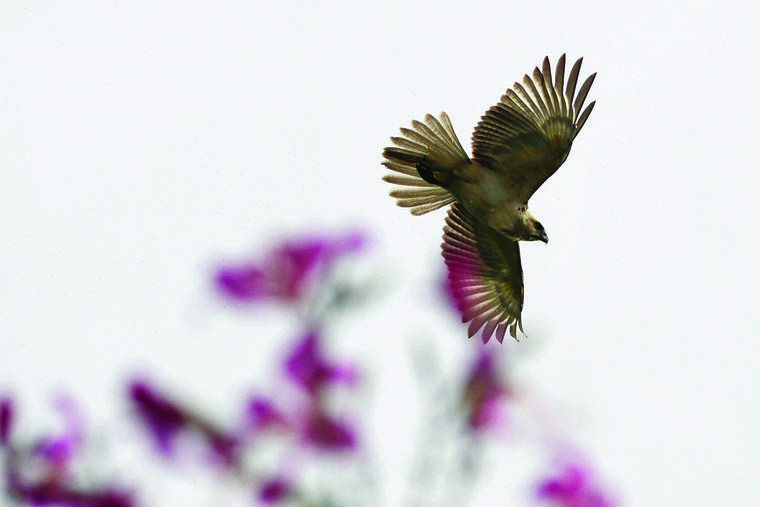The io, or Hawaiian hawk, will soon be removed from the list of threatened and endangered species following publication of a final rule by the U.S. Fish and Wildlife Service.
The delisting is based on studies showing range-wide population estimates have been stable for more than 30 years, according to the service. The io is nesting and foraging successfully in both native and altered habitats and has use of large areas of managed habitat. Based on the Service’s analysis, the io is no longer at risk of extinction, now or in the foreseeable future.
The final rule was published in Thursday’s edition of the Federal Register. It becomes effective 30 days after publication.
The io is the only hawk that nests and resides in Hawaii. When listed as endangered in 1967, the io was presumed to occupy only undisturbed, native habitat and its population was thought to be in the low hundreds. It is now known to occur in various habitat types, including native and nonnative forests, pastures and agricultural lands, according to FWS.
Further, improved monitoring, partner-led landscape-level conservation efforts and the species’ demonstrated resilience now indicate it no longer meets the definition of threatened or endangered.
The delisting is based on studies showing range-wide population estimates have been stable for more than 30 years, according to the service. The io is nesting and foraging successfully in both native and altered habitats and has use of large areas of managed habitat.
“Based on the service’s analysis, the io is no longer at risk of extinction, now or in the foreseeable future,” the U.S. Fish and Wildlife Service wrote in a Thursday press release.
The service published a proposed rule to delist io and post-delisting monitoring plan for public review and comment multiple times, most recently for 30 days on Oct. 30, 2018. The proposal was initiated in 2008 and more than 170 comments were received over the years.
“It is gratifying to say this species, listed more than 50 years ago, has a population secure enough to remove it from the list of threatened and endangered species” said Robyn Thorson, U.S. Fish and Wildlife Service, Columbia Pacific Northwest &Pacific Island Regions regional director.
The delisting of the io will not affect the protection provided to the species by the Migratory Bird Treaty Act or Hawaii law.

